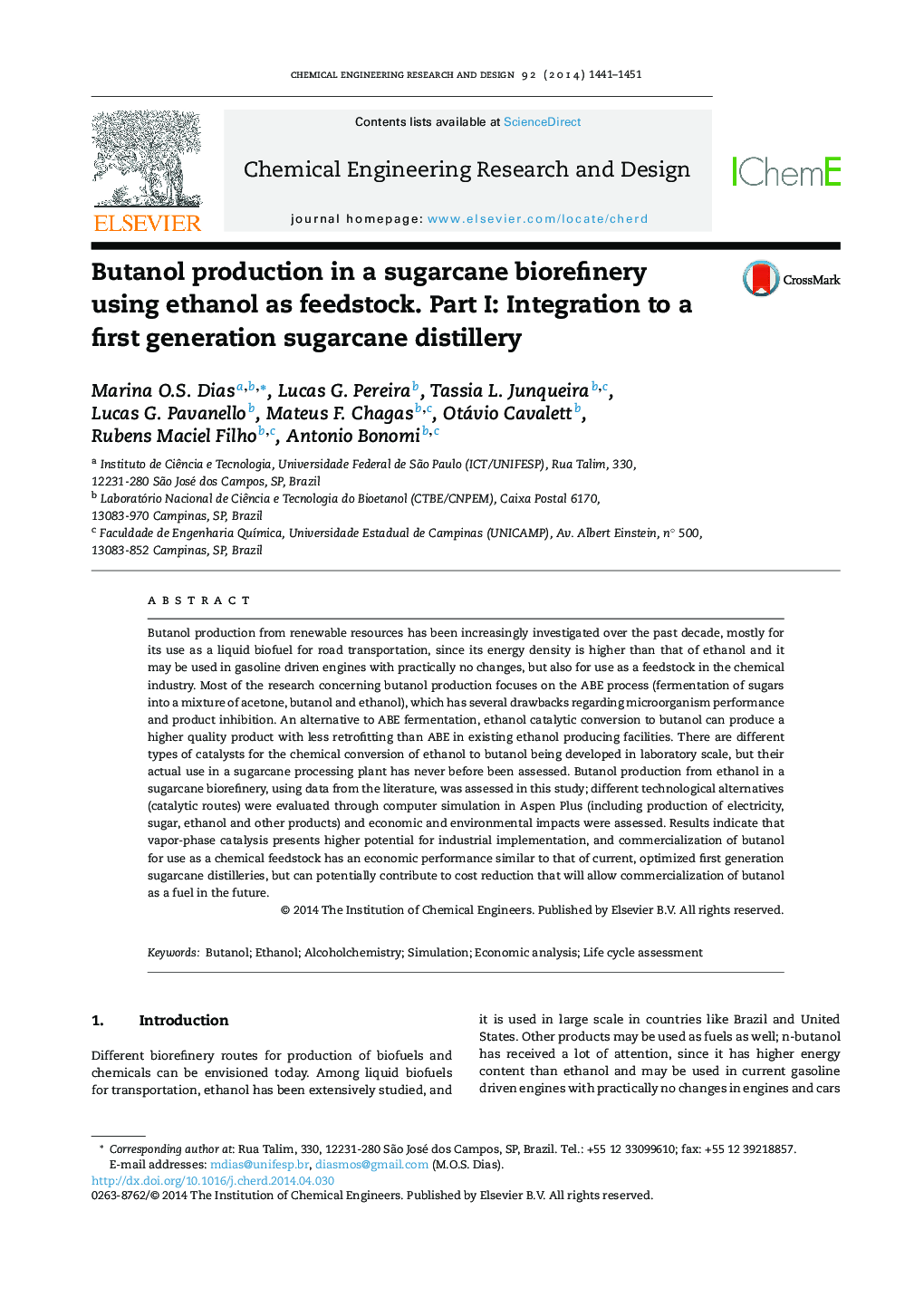| کد مقاله | کد نشریه | سال انتشار | مقاله انگلیسی | نسخه تمام متن |
|---|---|---|---|---|
| 620667 | 882498 | 2014 | 11 صفحه PDF | دانلود رایگان |
• Butanol is a biofuel more suitable than ethanol and feedstock for the industry.
• Butanol may be produced from catalytic conversion of ethanol.
• Butanol was produced using ethanol as feedstock in a sugarcane biorefinery.
• Process simulation, economic and environmental analyses were carried out.
• Vapor-phase catalysis has potential for implementation, butanol sold as chemical.
Butanol production from renewable resources has been increasingly investigated over the past decade, mostly for its use as a liquid biofuel for road transportation, since its energy density is higher than that of ethanol and it may be used in gasoline driven engines with practically no changes, but also for use as a feedstock in the chemical industry. Most of the research concerning butanol production focuses on the ABE process (fermentation of sugars into a mixture of acetone, butanol and ethanol), which has several drawbacks regarding microorganism performance and product inhibition. An alternative to ABE fermentation, ethanol catalytic conversion to butanol can produce a higher quality product with less retrofitting than ABE in existing ethanol producing facilities. There are different types of catalysts for the chemical conversion of ethanol to butanol being developed in laboratory scale, but their actual use in a sugarcane processing plant has never before been assessed. Butanol production from ethanol in a sugarcane biorefinery, using data from the literature, was assessed in this study; different technological alternatives (catalytic routes) were evaluated through computer simulation in Aspen Plus (including production of electricity, sugar, ethanol and other products) and economic and environmental impacts were assessed. Results indicate that vapor-phase catalysis presents higher potential for industrial implementation, and commercialization of butanol for use as a chemical feedstock has an economic performance similar to that of current, optimized first generation sugarcane distilleries, but can potentially contribute to cost reduction that will allow commercialization of butanol as a fuel in the future.
Journal: Chemical Engineering Research and Design - Volume 92, Issue 8, August 2014, Pages 1441–1451
